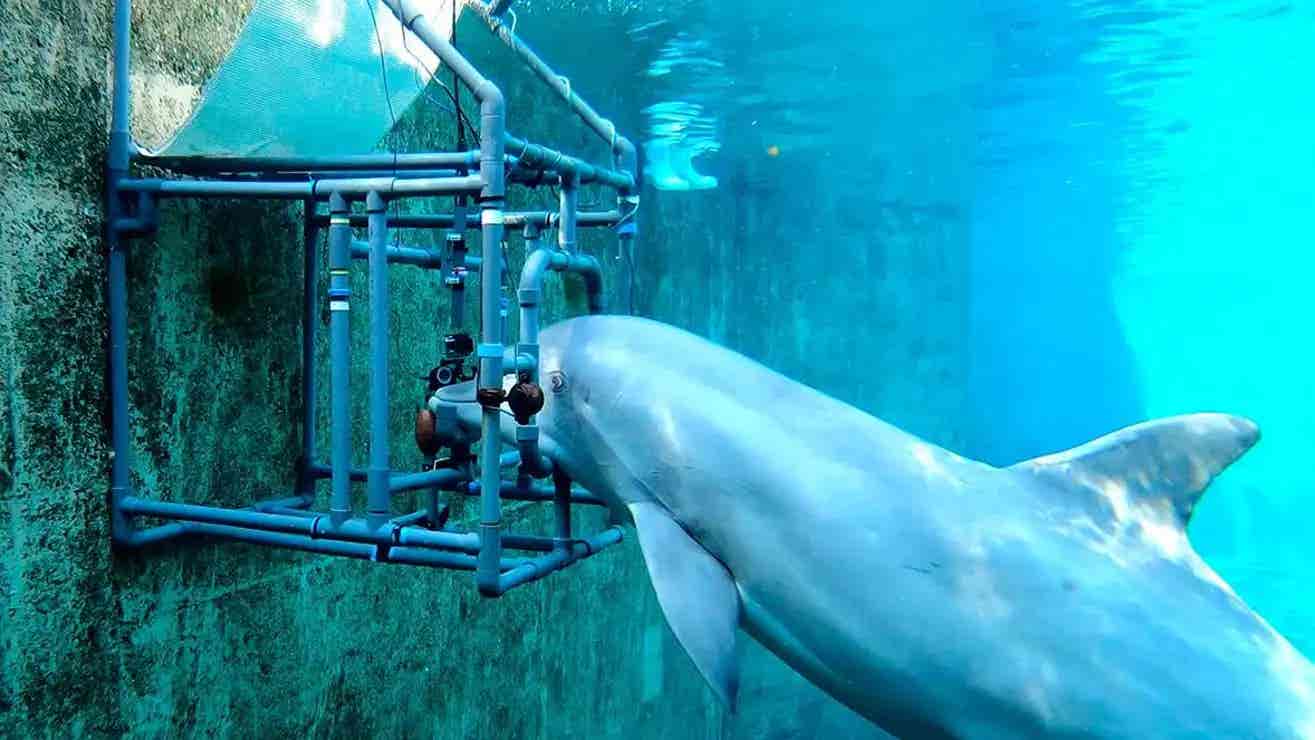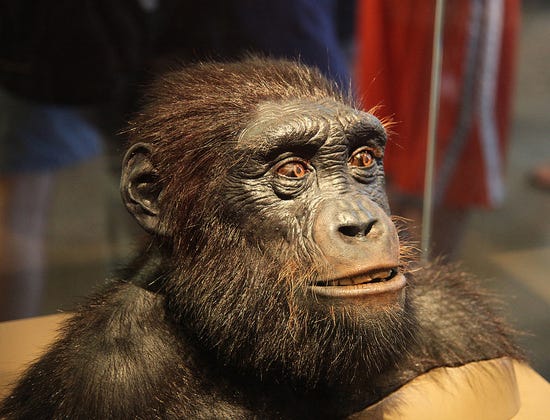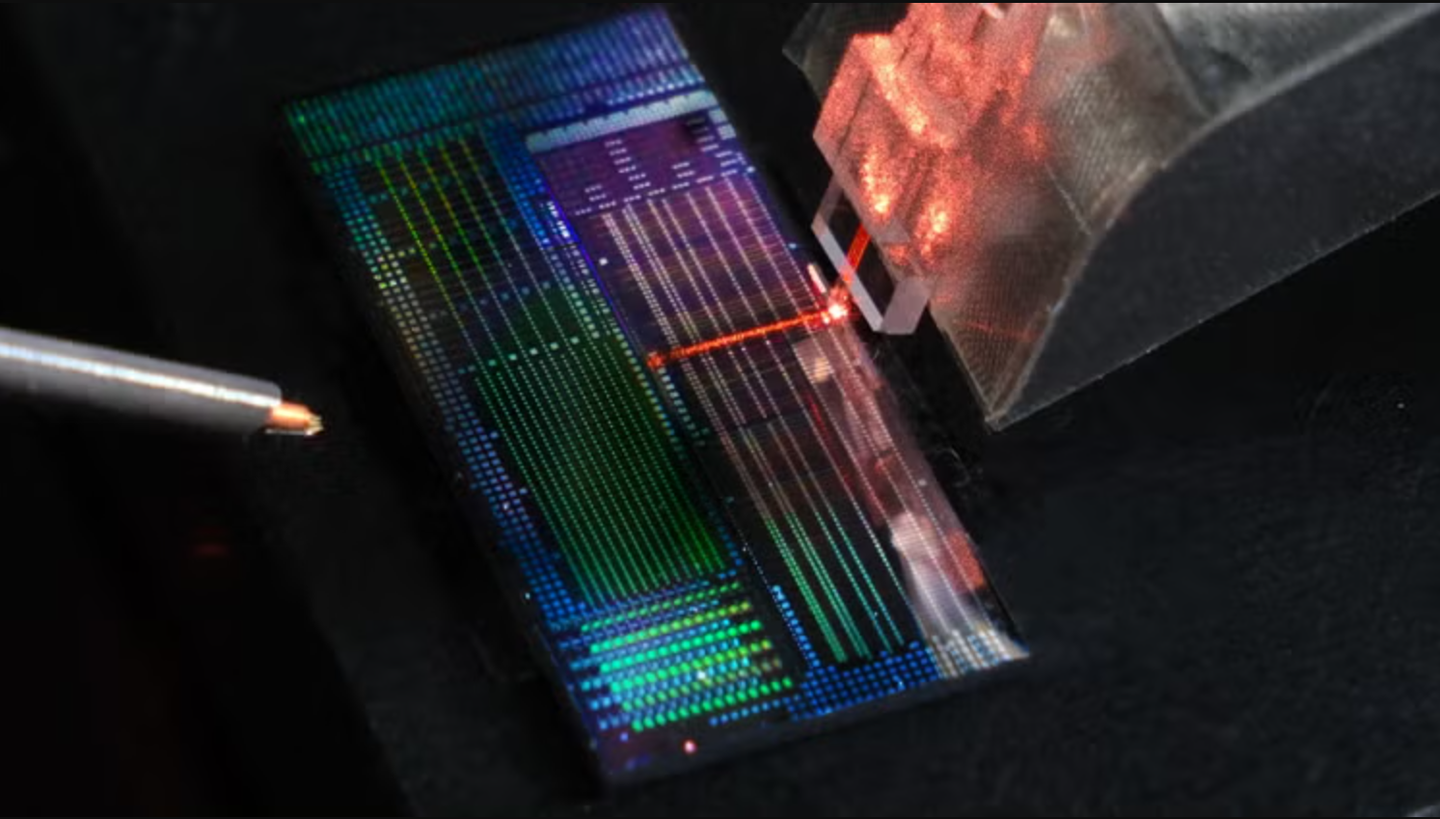Researchers discover new bottlenose dolphin sense
Recently, researchers made a groundbreaking discovery that adds a remarkable dimension to the sensory repertoire of these aquatic creatures.

[Dec. 2, 2023: JD Shavit, The Brighter Side of News]
Dolly the dolphin resting her jaw on a metal bar. The set-up was used to test the dolphin’s sense of electroreception in a series of experiments. (CREDIT: Tim Hüttner)
Bottlenose dolphins, those charismatic marine mammals known for their playful antics and sharp intelligence, have long fascinated scientists with their exceptional abilities. Recently, researchers Tim Hüttner and Guido Dehnhardt from the University of Rostock, Germany, made a groundbreaking discovery that adds a remarkable dimension to the sensory repertoire of these aquatic creatures.
It turns out that the dimples on the snouts of adult bottlenose dolphins, believed to be mere remnants of whiskers that fall out soon after birth, play a crucial role in enabling them to sense weak electric fields in their underwater environment. This extraordinary revelation, detailed in the Journal of Experimental Biology, sheds light on how these dolphins utilize their electric sense for various purposes, from hunting to navigation.
The journey into uncovering the dolphins' electric sense began when Hüttner and Dehnhardt noticed that the dimples on the dolphins' snouts closely resembled the structures that allow sharks to detect electric fields. Intrigued by this similarity, they embarked on a series of experiments to test whether adult bottlenose dolphins could indeed sense electric fields in water. The results were nothing short of astonishing, as all the captive dolphins in their study demonstrated an ability to detect electric fields.
Overview of the experimental setup during a trial. (A) Underwater view of a dolphin stationing inside the apparatus during a trial. The dolphin swims head-first into the submerged apparatus and places its rostrum on the jaw station while touching the target with the tip of its rostrum. The visual cover prevents any unintentional cueing by the experimenter as the dolphin cannot see the experimenter as soon as they enter the apparatus. (B) Close-up view of the dolphin stationing inside the apparatus. (CREDIT: Experimental Biology)
Dehnhardt describes the discovery as "very impressive," and it has opened up an exciting new avenue of research into how these marine mammals utilize this electric sense in their daily lives.
Unveiling the Sensitivity to Electric Fields
To gauge the sensitivity of bottlenose dolphins to electric fields produced by aquatic lifeforms, the research team collaborated with Lorenzo von Fersen at Nuremberg Zoo and Lars Miersch at the University of Rostock. They commenced their investigation by testing the electric field detection capabilities of two bottlenose dolphins, Donna and Dolly.
The experiment involved training the dolphins to rest their jaws on a submerged metal bar and swim away within 5 seconds of feeling an electric field produced by electrodes immediately above their snouts.
Related Stories
The researchers gradually decreased the electric field intensity, ranging from 500 to 2μV/cm, while monitoring how often Donna and Dolly correctly reacted to the fields. The results were astounding, with both dolphins displaying remarkable sensitivity to the strongest fields, consistently responding appropriately.
It was only when the electric fields weakened that subtle differences in sensitivity emerged. Donna exhibited the ability to sense fields as weak as 2.4μV/cm, whereas Dolly's threshold was slightly higher at 5.5μV/cm. This demonstrated that these dolphins possess an extraordinary capacity to detect even the faintest electric fields, a skill that could have significant implications for their survival in the wild.
Detecting Pulsing Electric Fields
Living animals generate electric fields that are not static but instead fluctuate due to various movements. For instance, the pulsing actions of fish gills cause their electric fields to vary rhythmically. To further explore the capabilities of Donna and Dolly, the researchers subjected them to pulsing electric fields at frequencies of 1, 5, and 25 times per second, while gradually reducing the field strength.
Close-up schematic view of the experimental setup during a trial. A dolphin stations on the target in the apparatus during a trial. (CREDIT: Experimental Biology)
Remarkably, the dolphins could detect these pulsing electric fields as well. However, it became evident that their sensitivity to alternating fields was somewhat reduced compared to their responsiveness to steady electric fields. Dolly, for instance, could only detect the slowest pulsing field at 28.9μV/cm, while Donna demonstrated the ability to sense all three pulsing fields, with the slowest being detectable at 11.7μV/cm.
Implications of the Electric Sense
The discovery of the bottlenose dolphins' sensitivity to weak electric fields opens up a world of possibilities in understanding their behavior and survival strategies. Dehnhardt highlights that this newfound super sense could aid dolphins in locating fish hidden in sediment just centimeters below the ocean floor. Unlike sharks, which are renowned for their electroreception abilities and can sense fish within 30–70cm, dolphins can employ their electric sense to pinpoint prey at the very last moment before striking.
Results from the psychophysical study with dolphins Dolly and Donna investigating their abilities to detect weak DC electric fields. (CREDIT: Experimental Biology)
Furthermore, Hüttner and Dehnhardt propose that this unique sensory ability could also explain the orientation of toothed whales to the Earth's magnetic field. Dolphins swimming through areas with weaker magnetic fields, while maintaining their average speed of 10m/s, could generate a detectable electric field of 2.5μV/cm across their bodies. This suggests that dolphins have the potential to use their electric sense for navigation, essentially creating a magnetic map that aids in their global movements.
As scientists continue to unravel the mysteries of this extraordinary sensory capability, it further underscores the complexity and adaptability of life in the world's oceans. Bottlenose dolphins, it seems, continue to surprise us with their incredible abilities, leaving us with a deeper appreciation for the wonders of the natural world beneath the waves.
REFERENCE: Hüttner, T., von Fersen, L., Miersch, L. and Dehnhardt, G. (2023). Passive electroreception in bottlenose dolphins (Tursiops truncatus): implication for micro- and large-scale orientation. J. Exp. Biol.226, jeb245845. doi:10.1242/jeb.245845.
For more science and technology stories check out our New Discoveries section at The Brighter Side of News.
Note: Materials provided above by the The Brighter Side of News. Content may be edited for style and length.
Like these kind of feel good stories? Get the Brighter Side of News' newsletter.



